1. Old-School Vacuums
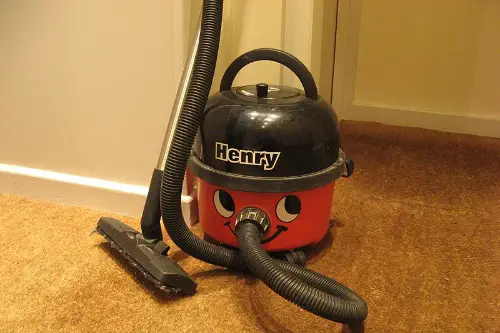
Old-school vacuums, while still functional, are on their way out due to advancements in cleaning technology. Robotic vacuums like the Roomba have already made their mark, offering hands-free cleaning with impressive precision. By 2035, robot vacuums will likely become even more intelligent and efficient, taking over the need for traditional vacuums. These smart vacuums will not only clean autonomously but will also be able to empty themselves and sort dirt and debris.
As robotic technology improves, vacuums that require manual handling will likely be replaced by devices that operate through smart home integrations. Future vacuums could even come with AI that detects which areas need more attention and adjusts its cleaning patterns accordingly. Traditional vacuums, which rely on bags and filters, will seem outdated compared to the sleek, smart, self-cleaning devices. The future of home cleaning will likely be all about automation.
2. Microwaves

The microwave has been a kitchen staple for decades, but its days could be numbered. With the rise of smart ovens, air fryers, and even induction cooktops, the microwave is facing serious competition, according to Mouser Electronics. In the future, cooking will likely become even more streamlined, with appliances that can combine multiple functions, making the microwave less relevant. Plus, as energy efficiency becomes more important, it’s possible we’ll see alternatives that use less power to get food heated up quicker.
Many homes are already embracing new tech like convection ovens and smart appliances, which can adjust cooking times and temperatures automatically. These new gadgets promise to not only replace microwaves but also improve the overall cooking experience. So, while microwaves may still be common in 2025, by 2035, they’ll probably be seen as a relic of the past. Don’t be surprised if kitchens evolve into spaces that look nothing like the ones we know today.
3. Traditional Dishwashers
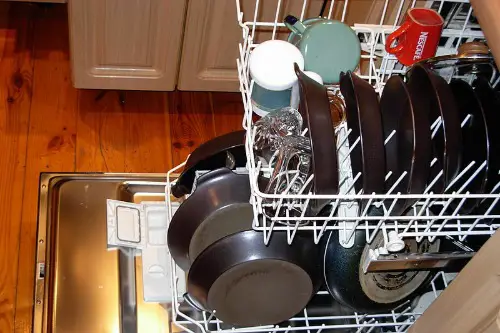
Dishwashers have been around for a while, but the future of cleaning dishes is looking different. As robotics and artificial intelligence (AI) continue to develop, we may see machines that can clean dishes without needing an entire appliance, according to CNBC. Future tech might allow us to just load our dishes directly into an automated cleaning system built right into the countertop or even a self-cleaning system in the sink. The dishwasher, with its bulky and energy-consuming design, will likely seem outdated as more efficient methods take its place.
Plus, innovations like ultra-efficient, water-saving dishwashers are already being made, so traditional models might be phased out by 2035. Expect compact, multifunctional alternatives that integrate cleaning systems into existing kitchen architecture. Appliances that handle cleaning through ultrasonic or chemical processes could render the typical dishwasher redundant. In the long run, a standalone appliance dedicated solely to dishwashing might be hard to justify.
4. Gas-Powered Stoves

Gas-powered stoves have been a kitchen favorite for generations, but as electricity becomes the cleaner, more efficient option, gas stoves are on the way out, according to TIME Magazine. Electric induction stoves are gaining popularity because they heat faster and more precisely, making gas burners seem less appealing. Moreover, as cities and countries push for sustainability, we can expect stricter regulations around gas usage in homes. By 2035, we may see gas stoves restricted in favor of safer, greener alternatives.
Induction cooking, which uses electromagnetic energy to directly heat pots and pans, could become the standard. It’s safer, more energy-efficient, and works much faster than gas. With advancements in electrical grids and clean energy, electric stovetops will soon be the obvious choice in most kitchens. Gas-powered appliances will likely fade into history, becoming just a memory for those who grew up with them.
5. Desktop Computers
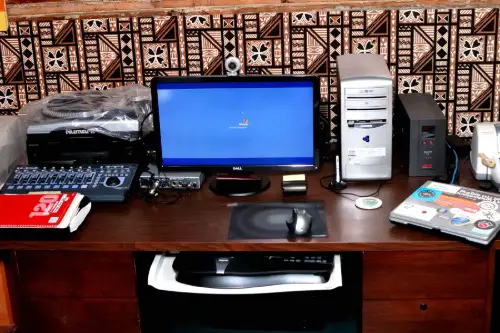
While desktop computers are still quite popular, their reign is coming to an end, according to TechRadar. Laptops, tablets, and smartphones have become much more capable, and they’re only getting better. Advances in cloud computing and portable hardware mean that everything you need can be accessed from smaller, more mobile devices. With 5G and beyond, high-speed internet will make traditional desktops seem bulky and unnecessary.
In the future, powerful cloud-based computing could make on-site hardware a thing of the past. Instead of having a bulky machine at home, people will likely rely on a combination of lightweight devices and remote servers for all their computing needs. With the continued rise of work-from-home setups and hybrid workspaces, the shift away from desktops to lighter, more flexible devices will be more pronounced. Desktops may become a rare sight in offices and homes by 2035.
6. Toasters
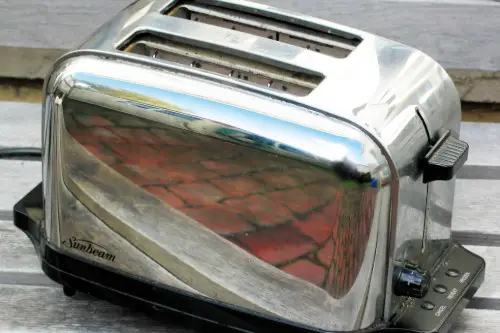
It might be hard to imagine, but the traditional toaster is slowly being phased out, The New York Times warns. Newer, multifunctional kitchen gadgets like smart ovens and air fryers can toast, bake, and cook in one go, which is more efficient than using a separate appliance for just one task. As kitchens become smaller and more versatile, people will turn to these all-in-one devices instead of cluttering their counters with single-use appliances. Plus, toasters are known for being energy-inefficient, which could make them obsolete in a future where every watt of energy counts.
While toasters are still commonly used, multifunctional appliances are winning over the hearts of time-pressed, eco-conscious consumers. The convenience of combining several cooking methods into one sleek device will likely take over by 2035. With technological advances, even breakfast routines could involve gadgets that make perfect toast and more, all while saving space and energy. Expect the humble toaster to be replaced by a gadget that can do it all.
7. Landline Phones
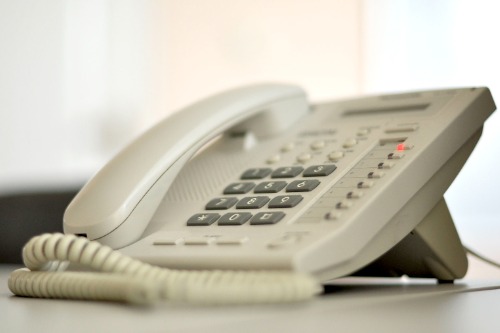
Landline phones have been in a steady decline for years, and by 2035, they’ll likely be a thing of the past. With mobile phones being so ubiquitous and VoIP (Voice over Internet Protocol) technology on the rise, the need for a landline in most homes is disappearing. Modern communication has shifted towards smart home technology, with voice assistants like Amazon Alexa and Google Assistant taking over. Instead of relying on a physical line, people will simply connect with others via internet-powered devices.
As cellular and internet connectivity improves, the infrastructure for traditional landline phones will become even less necessary. People will rely on smart devices to handle all their communication needs, from calls to video chats. Plus, with the convenience of portable devices, the idea of being tethered to a stationary phone will seem increasingly outdated. By 2035, most homes will no longer have a landline, and the landline phone will be seen as a relic of a bygone era.
8. Paper Shredders
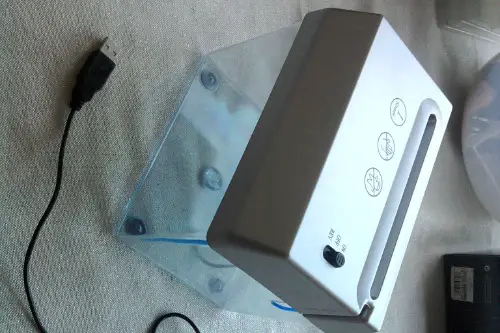
As we continue to move towards digital records and cloud storage, the paper shredder is likely to be replaced by more secure, tech-savvy solutions. With more businesses and individuals opting for paperless systems, the need for shredding documents will diminish significantly. Instead of sitting in the garage or an office drawer, shredders will be replaced by software that can securely delete files, ensuring no sensitive information is left behind. Additionally, privacy laws are evolving, and digital shredding tools can offer better compliance.
The transition to a paperless world means that people won’t need to worry about physical security as much as they did in the past. By 2035, storing important documents digitally will be the norm, and no one will have to worry about shredding old bank statements. Digital security measures and encrypted data storage will become the go-to methods for protecting sensitive information. In essence, the paper shredder will likely be as outdated as the fax machine.
9. Conventional Water Heaters
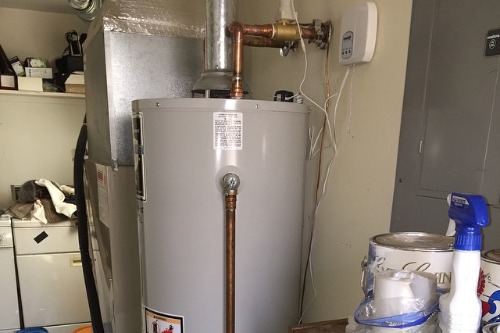
Conventional water heaters are bulky and inefficient, and they’re being replaced by more efficient models. Tankless water heaters, which heat water on demand rather than storing it in a tank, are becoming more popular due to their energy efficiency. These systems don’t require a large tank and provide an endless supply of hot water, making them a far more practical option for modern homes. By 2035, it’s highly likely that most homes will have switched to tankless heaters or alternative methods like solar-powered water heaters.
The trend toward energy efficiency and sustainability means that traditional water heaters, which store water in a tank and constantly use energy to maintain the temperature, won’t be able to compete. With the growing need to reduce energy consumption and carbon footprints, electric or solar-powered options will be the clear winners. This evolution could lead to a future where hot water is never a problem, and we won’t need massive tanks taking up space in our homes. Water heaters as we know them will become obsolete.
10. Refrigerators With Ice Makers
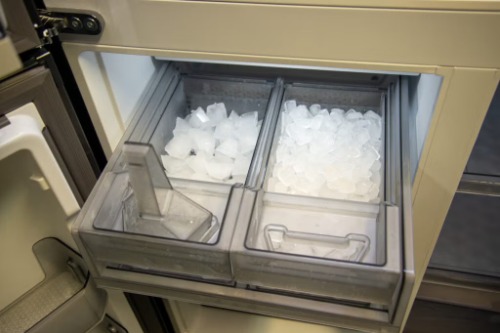
Refrigerators with built-in ice makers have long been a convenience, but they could be on the way out due to a couple of reasons. First, as more homes switch to smaller, more energy-efficient appliances, built-in ice machines take up valuable space. Plus, people are moving toward advanced water filtration systems that can provide chilled water and ice on demand, meaning the need for a separate ice maker is rapidly disappearing. We may even see home designs where ice-making is integrated into the water system itself, eliminating the need for yet another gadget in the fridge.
With smart refrigerators already offering much more than just keeping food cold—such as creating shopping lists, tracking expiration dates, and adjusting temperatures remotely—it’s clear that they will continue evolving. But the ice maker, while once a handy feature, will probably be a feature of the past. By 2035, refrigerators could be smarter, more compact, and even more eco-friendly, without the need for a dedicated ice production area. The future of cooling technology will prioritize efficiency, and ice makers just won’t fit in the picture anymore.
11. DVD and Blu-ray Players

Physical media is on the decline, and with streaming services continuing to dominate, DVD and Blu-ray players are losing relevance. People are increasingly watching movies and TV shows via platforms like Netflix, Hulu, and Disney+, eliminating the need for physical discs. By 2035, streaming will be so ingrained in everyday life that owning a physical player will seem unnecessary. The convenience of instant access to media will render physical copies obsolete for most consumers.
The rise of digital distribution has already put a huge dent in physical media sales, and new generations are growing up without the need for DVDs or Blu-rays. As internet speeds increase, the need for physical storage will continue to decrease, as everything will be available instantly via the cloud. By 2035, homes may have entirely switched to digital media, and physical discs will be a rare sight. People will instead have access to all their entertainment needs through seamless streaming.
12. Gas Water Heaters
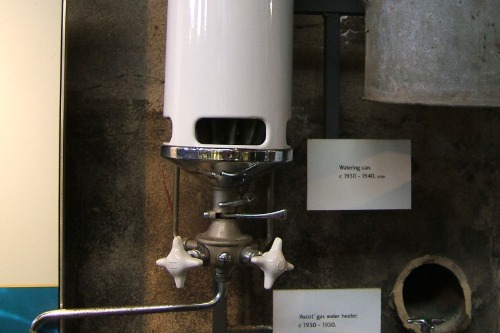
Just like gas stoves, gas water heaters are also under threat. With advancements in electric and solar-powered water heaters, the reliance on natural gas for heating water is becoming less attractive. In the long run, gas water heaters are not only less efficient but also contribute to higher carbon emissions. As we move toward a greener, more sustainable future, electric and alternative methods of heating water will take the place of gas heaters.
Electric water heaters are already being improved to be more energy-efficient, and solar water heating systems are gaining popularity as sustainable options. By 2035, most households will likely rely on green technology to heat their water, leaving traditional gas heaters behind. The push for renewable energy sources will drive the shift towards these cleaner alternatives. Gas water heaters simply won’t keep up with the growing demand for eco-friendly solutions.


